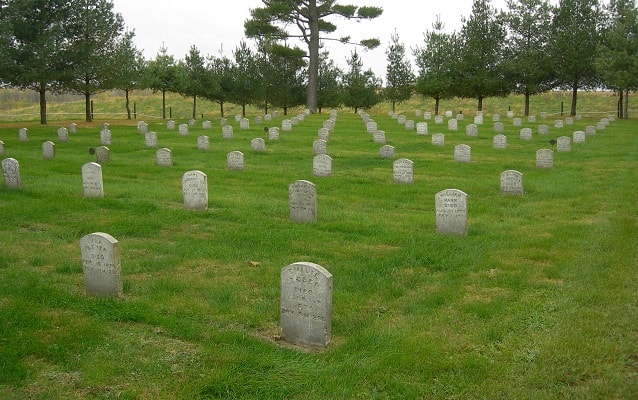Last updated: December 18, 2017
Place
High Amana Cemetery

Photo by Corinna Makris (Flickr)
The Amana Colony cemeteries were all laid out within a few years of the village’s settlement. Each cemetery is surrounded by a hedge of pine trees, popular because they keep their leaves all winter and were regarded as religiously symbolic of the eternal life promised through Christ. Originally, these cemeteries featured wooden markers, which were approximately the same size as the concrete ones now in use. They featured the name of the deceased, date of death and age at death printed on them. Wooden markers were replaced with more durable concrete ones around the turn of the century.
Graves in the Amana Colony cemeteries all face east - the direction from which the Inspirationists believe Christ will approach at the time of the Second Coming. Until the 1930s, suicide victims were buried in a separate section and faced west. Children and non-Amana Church members are still buried in separate sections of the cemeteries. Church members are buried in chronological order of death. This reflects the belief that all are equal, and are all brothers and sisters and, therefore, the entire cemetery is essentially a "family plot."
William Perkins, in his 1891 book about the Inspirationists, wrote,
"The burial customs are simple, without the ostentation of many other denominations. No costly monuments are used, but only a simple slab of wood, bearing an inscription of the name and age of the deceased. They do not believe in prayer for the dead nor in any outward form of mourning, but the memory of the departed members is cherished with more than filial affection in the hearts of friends, --something worth more than hired mourners and outward show."
